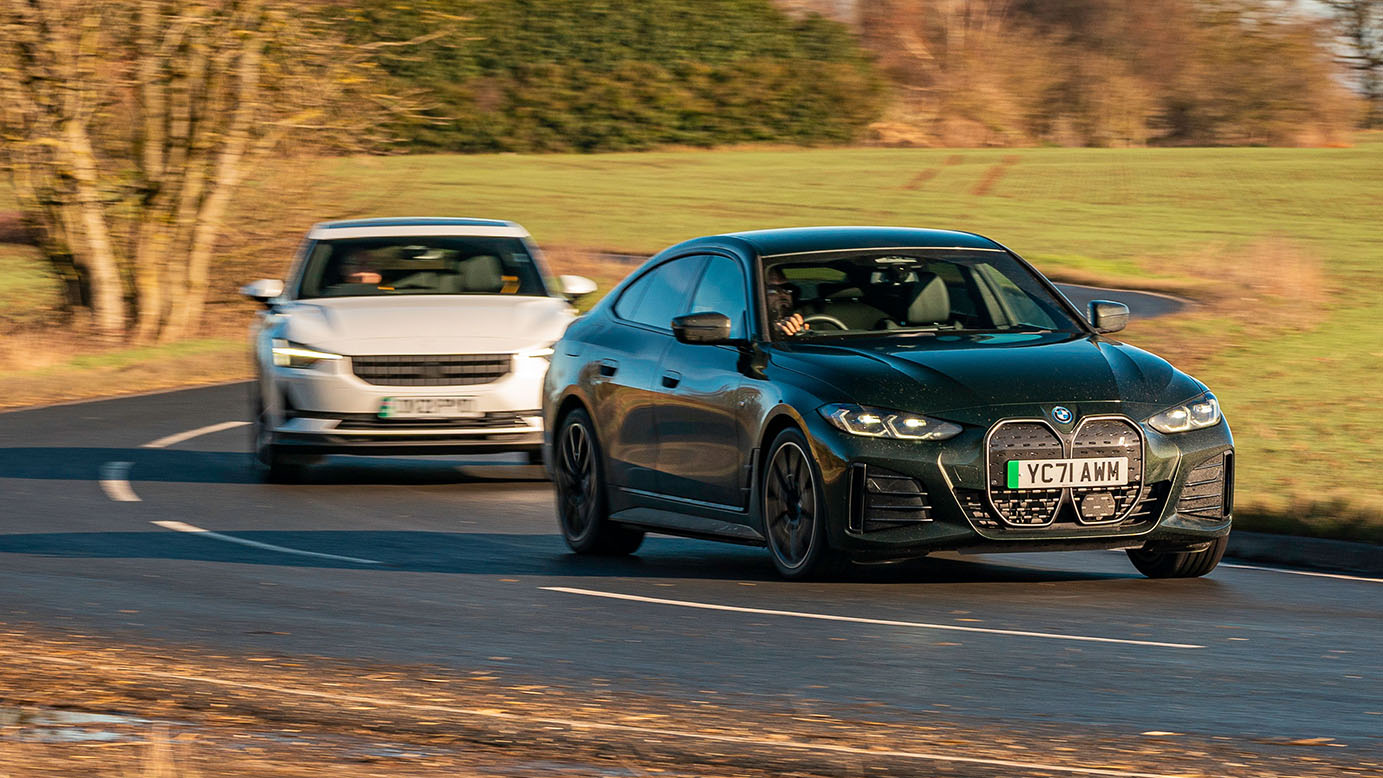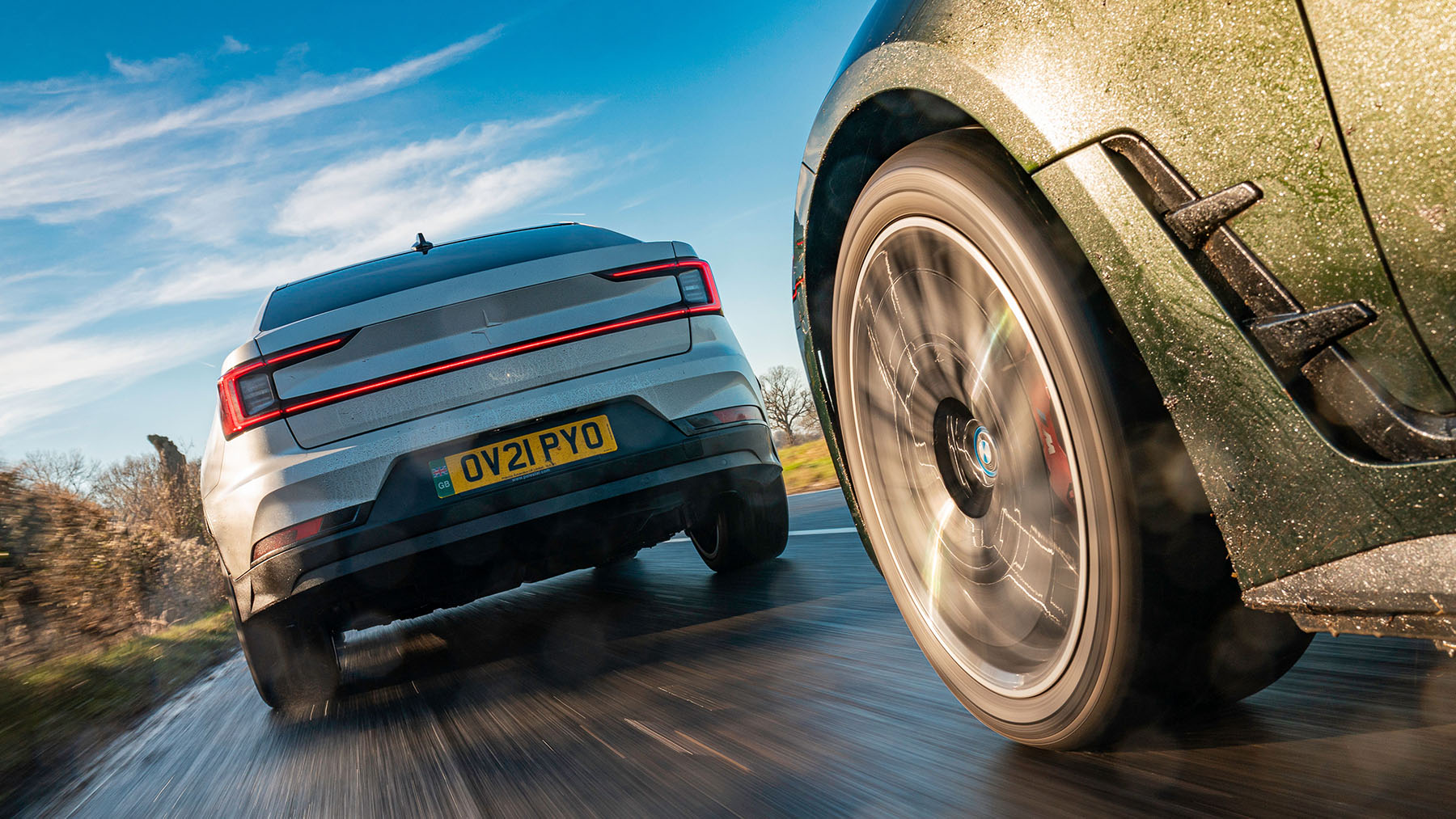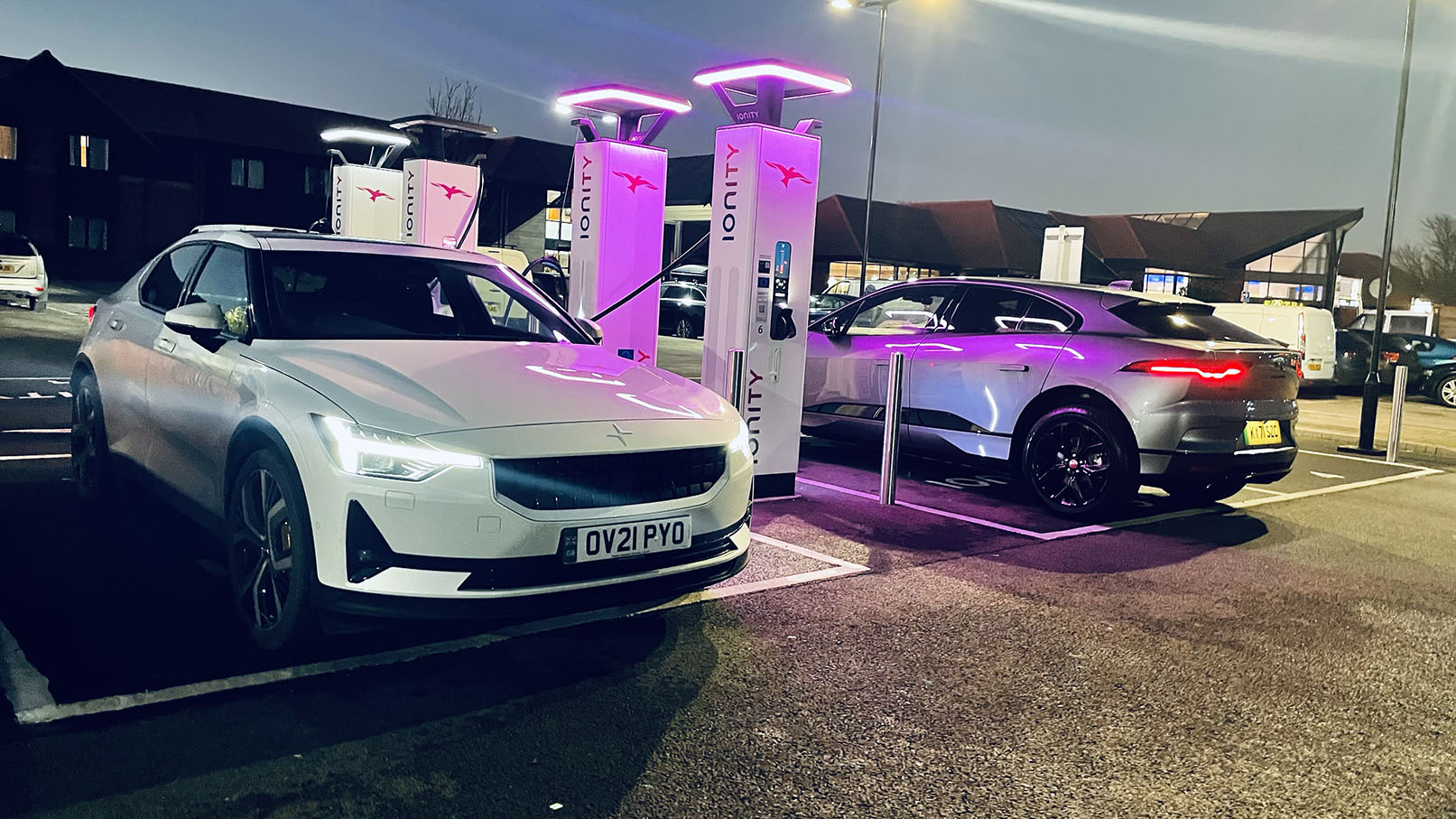
Polestar 2 Long Range AWD Performance Pack - long-term review
£45,900 (£58,900 as tested)
SPEC HIGHLIGHTS
- SPEC
Long Range AWD Performance Pack
- Range
292 miles
- ENGINE
1cc
- BHP
408bhp
- 0-62
4.5s
Polestar 2 vs BMW i4: what matters to you, fast and effective or slow and nuanced?
A car made to entirely please motoring journalists would probably get on your nerves 90 per cent of the time.
Of course, there’s a rarefied sector where handling and engine response, progressive oversteer characteristics and the ability to do third-gear, 100mph powerslides on a deserted track is absolutely the mission statement, but most of us generally just want to be able to punt smartly out of a greasy junction without having to think too much about it.
Most of us, most of the time, care more about ride quality, comfort and useful, intuitive technology than we think we do. That kind of stuff is relevant every single day, where the daydream of the lonely B-road blast realises itself far less regularly than we hope. And yes, it’s exceptionally hard to do both; cars that are reactive and ‘fun’ to drive fast tend not to be great at swanning around, and the converse is generally true.
Taken to logical extremes, proper track cars require absolute compromise on the road, and dedicated cruisers will boat themselves around a track feeling all discombobulated. Good compromises can be found (Porsche 911s, Renault Alpines and some others come really close), but there’s always that awkward word: compromise.
But why am I blathering on about handling and track cars when talking about a couple of new electric saloons? Because when the lovely Paul Horrell and I were out testing the Polestar 2 Long Range Dual Motor and BMW i4 eDrive 40, our thoughts inevitably turned to which one was faster, and which one handled better. It’s kind of in our professional DNA.
And here’s where it gets complicated. The Polestar has more power, and is noticeably faster. Some 402bhp and 487lb ft of torque plays 335bhp and 317lb ft for the BMW, with the P2 weighing 63kg more (according to the basic stats). It’ll knock a full second off the BMW’s 5.7 second 0-62mph time, and that you can feel. Yes, the BMW i4 eDrive 50 exists and is much faster still, but the Polestar 2 tops out under 50K without options, so we’re playing the what-can-you-get-for-the-money card here.
The thing is, the BMW is the nicer car to drive quickly. The steering is better - pretty much like any BMW fast-ish saloon - the braking system is more refined, both in terms of re-gen and pedal feel, the chassis more nuanced. Where the BMW will offer options when you push, the Polestar will simply throw benign understeer at you until you stop being silly. It’s faster, but ultimately less ‘fun’. Yes, you can provoke the P2, but it requires the kind of driving best left to closed courses, and it tends to fire the pre-crash seatbelt tightening, which can be disconcerting mid-corner. Allegedly.
But if you want to simply get on with the job of driving down a British B-road, the Polestar just stomps down it. The BMW has an excellent and subtle traction-control system, but you can still feel it working things out. The Polestar is simply dividing torque and applying it where the BMW is reining itself in, no matter how minutely. The BMW rides better - and has modes which can change it’s essential characteristics - but the Polestar gets better the faster you go, thanks to adjustable (if you can be bothered, it’s a jack-and-tweak job) Ohlins dampers.
And of course, it comes down to more than just the basic handling/power dynamic. The BMW has excellent tech, but so does the Polestar with Google woven into it from birth. The BMW feels more fussy inside, the Polestar more reserved, calm, and intuitive. But where things really get sticky is the fact that the BMW appears, on first appraisal, to be much more efficient. Yes, it’s got a slightly bigger battery (80.7kWh plays 75.0), but the range it manages to eke out of those kWh means it does an easy 250-miles even on a cold and fast day, where the Polestar 2 manages just 180-ish.
With electric cars, when it comes down to daily use and reasonable miles, range equals convenience. And the problem for me is that the way I use a car for 90 per cent of the time (commuting, moving people and stuff), that range and efficiency would swing it. Which means I’d essentially be buying a car because of its mpg and fuel tank size, if we’re talking old money. But this is Top Gear, and you’re reading this because you probably enjoy driving, rather than just the act of moving from place to place.
So the question is, do you prefer that ultimate tactility in your daily driver, that finesse, even if you can only really feel it now and again, or would you prefer a car that delivers slightly less dynamically, but for a more practical slice of the time? Fast and effective (the Polestar 2), or ultimately slower, but with more nuance (the BMW i4)?
Featured

Trending this week
- Car Review
BMW iX3






